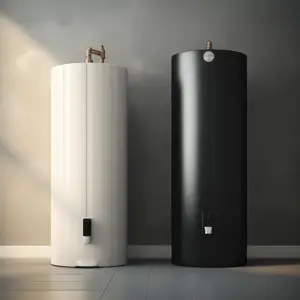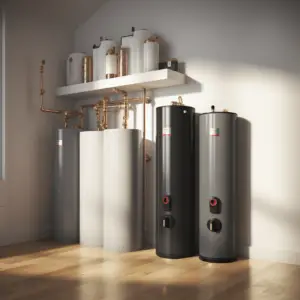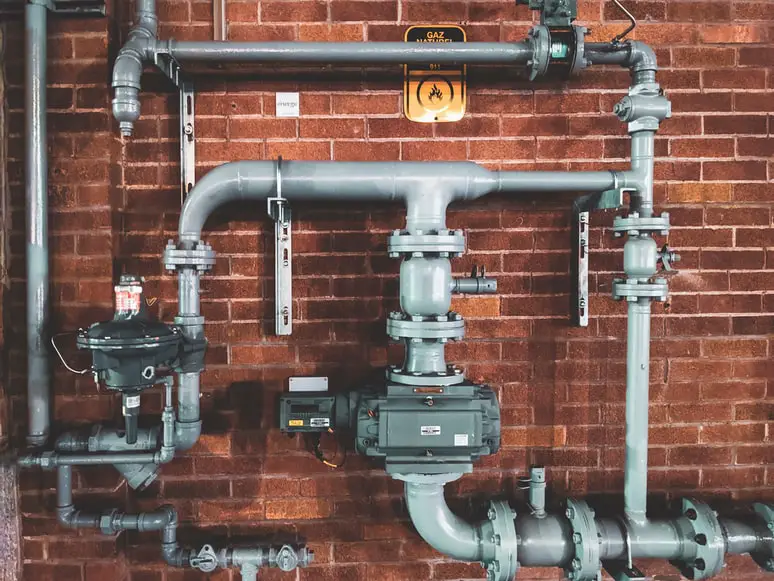4500-Watt and 5500-Watt Water Heaters, Water heating provides an undeniably luxurious if not essential service without which, heating water would be an arduous task and in some instances even impractical.
In recent decades, water heating has evolved in terms of technology and many homeowners now install hybrid water heating systems as opposed to water heating tanks.
Even more popular today, are tankless water heating systems. Some homes, however, still operate water heating tanks and there are homeowners who still prefer and install water heating tanks.
There is a vast array of water heating tank designs and models to choose from should you go for this type of water heating solution.
Up to 18 percent of your energy consumption will go into your water heating needs.
Water heating, therefore, accounts for a significant quotient of your entire energy bill so energy efficiency must factor into your decision going forward.
Table of Contents
How an electric water heating tanks works

Water heating tanks take advantage of gravity and the fact that hot water rises to the top while cooler waters tend to dive below.
Water fills in the tank through the dip tube at the top of the tank and if the tank is plugged in and turned on, the element or elements, located at the bottom of the tank will begin to heat the water.
As the water gets hot and reaches the temperature you have set on your thermostat, it will rise to the top and flow out of the tank, through a heat-out tube, through your pipes, and to your faucets for use.
4500 Watt vs 5500 Watt Water Heater: What is the Difference?
Most water heating tanks store approximately 50 – 80 gallons of water. The main difference between the two heating elements is the amount of time it takes to heat the water.
A 4500-watt element heats 18–25 gallons of water per hour, while a 5500-watt element heats 25–35. Thus, higher wattage heats more water in less time.
After your tank is empty, the 5500-watt element heats up more water faster than the 4500-watt element. A widespread misperception is that increasing element wattage raises water temperature. Quite the contrary.
The thermostat controls the temperature of your home’s water, which usually doesn’t exceed 180 degrees Fahrenheit or drop below 1000 degrees Fahrenheit by manufacturers.Most jobs can be done with 180-degree water.
For children, the elderly, and convalescents who may not react quickly, higher water temperatures are not worth the danger of scalding and burns.
4500-watt Vs 5500-watt water heater: Which is better?
Convenience and Time
Based on the convenience of time alone, the 5500-watt water heater is better. If you have a family of eight, your hot water usage is likely greater than say a family of three.
This means you have a frequent need for hot water to shower, cook, wash dishes, clean clothes, drinking and so on.
With a 5500-watt water heater, you have a reduced waiting time for water to heat up given the numerous needs of such a family.
A smaller family could function comfortably with the 4500-watt water heater since each full tank of water will satisfy more needs.
Energy Consumption
In general, the 5500-watt water heater will use up more power than the 4500-watt water heater so your bill will be higher if this is what you have. For lower energy costs, go with the 4500-watt heater which is just as efficient.
Your water heating bill, however, is not entirely dependent on the wattage alone. Another common misconception is that turning the thermostat to a low temperature when you do not need water immediately will expend less energy overall.
In truth, as long as your water heater is on, it will consume electricity and the bill will continue to generate in tandem with how much energy the low setting consumes alongside the amount of time this goes on.
You may find that even with a lower wattage heater, your energy bill is still high if this is your practice.
If water is not needed for a number of hours or for a whole day, it would be best to turn off the power to your water heater altogether.
water heater

Electric water heating tanks lose efficiency over time as they age, just like all mechanical and electrical devices.
This could be another reason your energy bill gets higher with time. Tank-less water heaters are a viable solution here as they have a life span of up to 25 years which is twice the life span of the average water heating tank.
Upgrading to a more modern heating tank with greater energy efficiency stats is also an option. This is considerably cheaper since the basic infrastructure for a water heating tank system is already in place.
Tank-less water heaters also have excellent energy efficiency compared to water heating tanks and you should expect anywhere between 24% and 34% increase in energy efficiency.
The cost of installing afresh a tank-less water heating system can be prohibitive but in the long run, it may be worth the investment.
Can you replace a 4500-watt water heater with a 5500-watt water heater?
Yes, you can and vice versa. If your water heating needs have changed, you can replace one with the other.
When replacing the 4500-watt heater with the 5500-watt water heater, ensure you have sufficient amperes for the new heater.
If you have a 30-amp breaker installed, it should work comfortably with both heaters. If it is less than that simply replace your breaker with one that can accommodate 30 amps.


